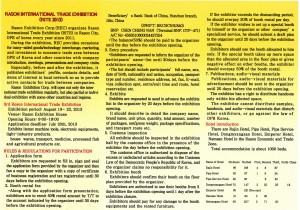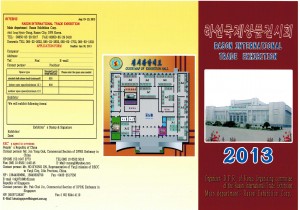Institute for Far Eastern Studies (IFES)
2013-12-27
In an effort to restore the mood of economic development following the ‘terror politics’ created from the execution of Jang Song Thaek, North Korean state media is beginning to emphasize “construction of a powerful economy” and “improvement of people’s lives” once again.
Rodong Shinmun reported on December 19, 2013 that all fields reached their production plans for the year, describing (on page 3) exemplary cases of various party organizations that upheld the legacies of Kim Jong Il and “displayed best practices that actively contributed to improving people’s lives.”
In one article (“Advancement in Science and Technology Is the Lifeline of Constructing a Powerful Economy and Improving People’s Lives”) the importance of science and technology was emphasized. It claimed, “breakthrough in science and technology is the best way to achieve a miracle and innovation in production while protecting the dignity of the nation in the era of knowledge economy.”
Korean Central Television, Korean Central Broadcasting, and Pyongyang Broadcasting encouraged its people to realize “new miracle, new record” in the production fields emphasizing the goals of the Kim Jong Un regime, “construction of economic powerhouse,” and “construction of civilized socialist nation.”
In addition, the military was presented with modern fishing boats. Kim Jong Un’s gift to the military may be interpreted as a display of interest in improving the welfare of soldiers. Kim Jong Un was reported to have made an on-site inspection at the “8.25 Fishery” military unit and expressed interest in the welfare of the soldiers.
Kim Jong Un is also continuing to commend “best citizens” as he delivered letters of appreciation to recognize those that displayed exceptional performance at the construction sites of Sepho Tableland and the residential complex for Kim Il Sung University (KISU) faculty members.
In the Kim Jong Un era, state media is continuing to emphasize the achievements in the construction sectors, calling these times a “new heyday of juche construction.” It listed last year’s construction achievements: completion of Changjon Street, People’s Theatre, Pyongyang Children’s Department Store, Rungra People’s Pleasure Park, People’s Outdoor Skating Rink, Pyongyang Folk Park, and Ryugyong Health Complex.
In addition, it boasted that Munsu Water Park was “miraculously” completed in only nine months. Other achievements were listed: War Memorial, Mirim Riding Club, Ryugyong Dental Hospital, Okryu Children’s Hospital, Unha Scientists Street, and KISU faculty apartment complex.
North Korea is propagating these achievements, heralding the Kim Jong Un era as the “glory days of construction” to promote his accomplishments and consolidate his power base.
During his own period of succession, Kim Jong Il sought the support of the masses by emphasizing construction of Changgwang and Munsu Streets and landmarks such as Juche Tower, Kaeson Mun (Gate of Triumphant Return), and Pyongyang Maternity Hospital.


